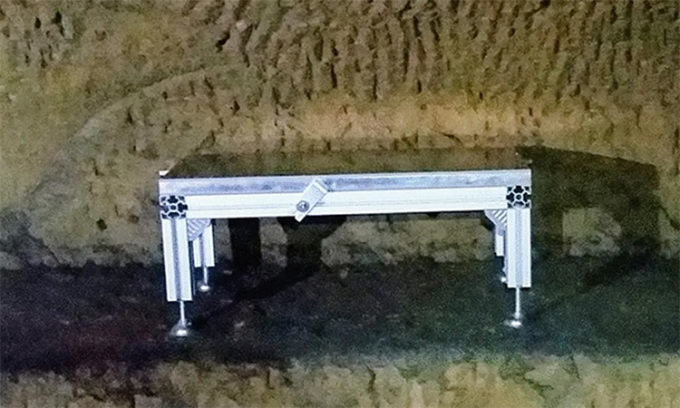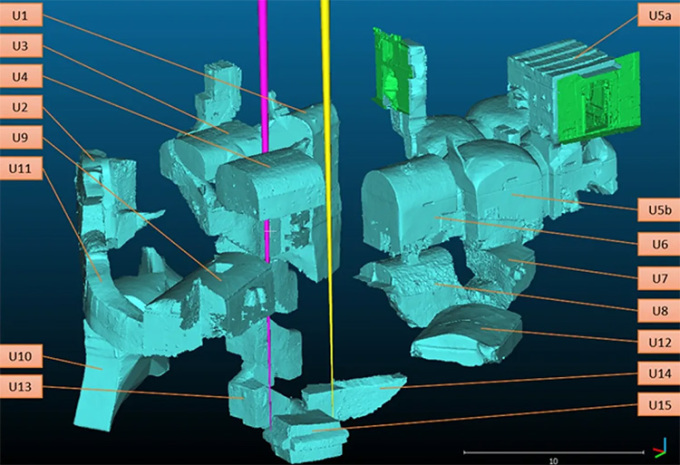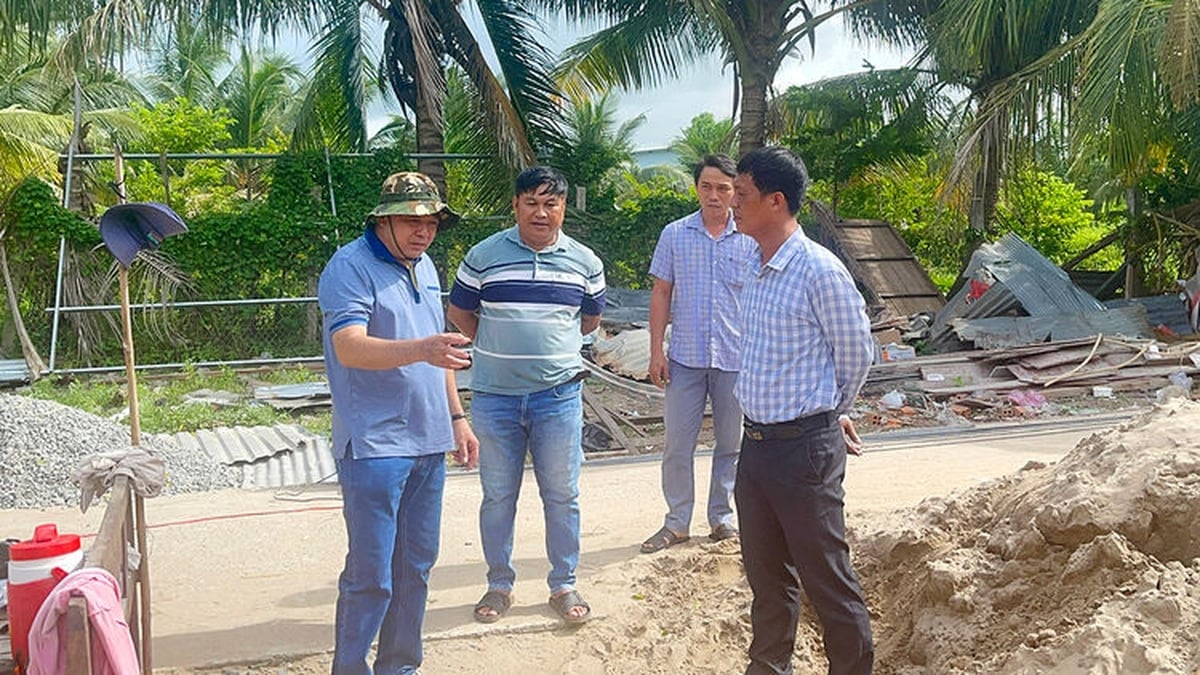A team of Italian and Japanese researchers has found the burial chamber of an ancient cemetery hidden under the city of Naples for the first time using lunar tomography.

Muon detectors are housed in an ancient vault. Photo: Valeri Tioukov
In muon tomography, or muography, scientists use cosmic rays to map inaccessible areas. Muons are negatively charged particles that are created when cosmic rays collide with atoms in Earth's upper atmosphere. Muons reach the Earth's surface at a rate of about 10,000 per square meter per minute. Muography helps build 3D models from data collected as the particles pass through obstacles of varying densities, such as walls or floors.
In a new study published in the journal Scientific Reports, a team of experts used the technique to map the remains of the ancient Greek city of Neapolis beneath the city of Naples, IFL Science reported on April 26. Excavations have been unable to reach much of the ruins due to the high population density of the area.
"The ruins of the ancient city of Neapolis with buildings, streets, aqueducts and cemeteries built by the Greeks from the second half of the first millennium BC are now located at a depth of about 10 m below the street level of the city of Naples," the research team said.
"The first challenge was to design a compact muon detector with high angular resolution, transportable in a small area and not connected to the power grid. The detector was developed based on technologies we use in physics experiments at CERN and the INFN Gran Sasso National Laboratory," said Giovanni De Lellis, an expert at the Federico II University and the National Institute of Nuclear Physics (INFN) in Naples.

Diagram created by the research team. Photo: Valeri Tioukov
The muon detectors were placed in an ancient vault 60 feet below the street level in Naples. Over several months, they picked up about 10 million muons, allowing the team to create a stereoscopic reconstruction.
"Based on the number of muons reaching the detector from different directions, we can estimate the density of the material they passed through. We found data that can only be explained by the presence of a new burial chamber," said Valeri Tioukov, lead author of the study and an expert at INFN.
Many similar burial chambers in the area contain elaborate frescoes and sculptures that wealthy Hellenistic families built for their dead. However, scientists have not been able to access the newly discovered chamber and have only studied it using cosmic rays.
Thu Thao (According to IFL Science )
Source link



































































































Comment (0)